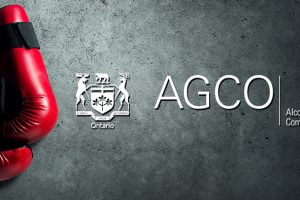Roy Brindley’s Horse Racing Guides (Part 4): Types of Races
Next up in Roy’s racing guides series, is the type of races offered in UK horse racing betting. As you will see, there are numerous different race types.
How Many Different Classes of Horse Races Are There and What Do They Mean?
There are a remarkable 20 different types of horse races in the UK they are:
Maiden: A race restricted to horses that have never won a race under that specific code – flat or jumps.
Novice: These races are open to horses that have never won a race but also to the winners of either one or two races. Over Jumps, a novice chaser or novice hurdler is classified as a horse that has not won a chase or hurdle race (respectively) before the end of the previous season.
Seller: Either a handicap or a non-handicap contest, the winner of these races are offered for auction in the winner’s enclosure after the race.
Claimer: Every horse racing in a claiming contest can be bought after the race for a price registered at the time of entry. The price connections seek is used to calculate the weight their horse will carry in the race.
Handicap: The most popular of all race types in the British Isles, handicaps see runners carry a weight allotted per their official handicap rating. Some dedicated punters have devised their own set of handicap figures and use them as part of their betting strategy.
Restricted Handicap: Some handicaps can be restricted to specific horses. For example, veterans and even grey horses.
Nursery: Flat handicap races that are restricted/limited to two-year-old horses only.
Classified Stakes: Normally restricted to low-grade horses, these contests see horses of similar handicap ratings banded together and all carrying the same racing weight.
Conditions Race: Races of this type see horses racing weight decided by ‘conditions’. These can and normally do include age, gender, and previous success in races of a certain value.
Auction Race: Normally limited to horses sold at auction relatively cheaply, the weights carried by runners in auction races are dictated by their sale/purchase price. Horses sold at the ceiling price – according to the race conditions – carry top weight. Horses purchased for less, at various increments below the stated value, will carry less.
Median Auction: Another contest aimed at cheaper horses, eligibility, and allocated racing weights are determined by the median price of a horse’s sire’s offspring at the sales.
Sales Race: Invariably valuable big-field races, entry into a sales race is limited to horses sold at a specific auction sale and normally a sale for yearlings. Racing weights are determined by an individual horse’s purchase price – the lower their sale price, the lower their allocated racing weight.
Apprentice and Conditional Races: These can be handicap or non-handicap races that are restricted to riders who are not yet fully qualified to become professional jockies. Apprentice races take place on the flat.
Over the jumps, these contests are called Conditional Races. Some apprentice/conditional races are limited to jockeys who have not yet ridden a specified number of winners.
Amateur Races: Once again, these contests can be handicaps or non-handicaps. They are restricted to jockeys who are not licensed professionals – or apprentices/conditionals.
National Hunt Flat Races: Regularly referred to as ‘bumpers’, are restricted to horses that have never previously run in any type of race – except for a prior ‘bumper’. They are aimed at late-maturing jumps-bred horses to give them racecourse experience. There are no obstacles in bumper races and only horses aged seven or younger can run in them.
Hunter Chase: Restricted to amateur riders, only horses that have been taking part in hunting are eligible to run in these steeplechases. Normally attracting veteran horses towards the later stage of their careers.
Beginners Chase: A conditions race that is restricted to horses that have never won a steeple chase.
Graduation Chase: Also a conditions race – but this time restricted to horses that have not won more than two chases.
Introductory Hurdle: These are conditions races for juveniles – horses aged three years old in jumps racing – and are restricted to horses that have not run in more than one hurdle race.
Pattern Races: The four highest levels of racing in Britain – Group-1s, Group-2s, Group-3s, and Listed races – are categorized as ‘pattern races’. Group races should determine which horse is best and so they are level weights contests.
But there are some conditions. Fillies and mares receive a weight allowance from colts and geldings. Similarly, a weight-for-age system allows younger horses to receive weight from older rivals.
What Is an Allowance Race in Horse Racing?
Very popular in America but also seen in British horseracing, allowance races are conditions races with restrictions. These could include age, the maximum number of previous starts, and the number of previous victories.
What Is a Juvenile in Horse Racing?
More so a term used in North American horse racing, a juvenile is quite simply a two-year-old. Incidentally, this is the minimum age for any horse race.
What Is a Nursery Race?
Only staged on the flat from late summer onwards, nursery races are handicap contests restricted to two-year-olds.



